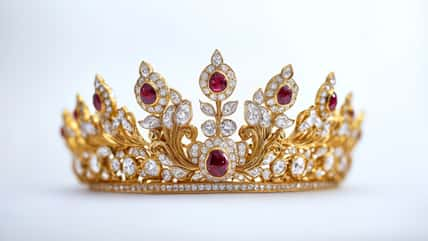In The 1920s, Women Weren’t Welcome To Play Soccer, But She Defied The Odds And Excelled In The Sport Despite Discrimination

In England during the 1920s, women were heavily discouraged and banned from playing professional football, or as we know it, soccer, for the Football Association.
But Lily Parr, a soccer player who was eventually inducted into England’s National Football Museum Hall of Fame, defied the odds and excelled in the sport despite the discrimination.
Lily was born in England in 1905. Growing up, Lily loved to play soccer in the streets with her brothers. She had no interest in activities that young girls were typically encouraged to pursue at the time, like sewing and learning to cook. She loved playing sports and competing with her brothers.
When she was a teenager, Lily went to work for the munitions factory named Dick, Kerr & Co. during World War I. The company had a women’s soccer team, and she played for them as a left-back.
Around this time, Lily became well-known for her very strong personality and grit. She made many friends on the team and was always ready to challenge anyone who doubted her capabilities.
Lily was also famous for her powerful left foot, which was said to be as strong as a mule’s. Her left foot kick once even broke the arm of a male goalkeeper who said she’d never be able to score against him.
During her time with Dick, Kerr & Co., Lily scored hundreds of goals. When the Football Association officially banned women from playing professional soccer in 1921, Lily and the Dick, Kerr & Co. team would play for whoever they could. The following year, they traveled to the United States and tied in a game against a male team in Washington, D.C.
Eventually, the team lost support from the munitions factory, so they renamed their team the Preston Ladies to keep playing together. After leaving the factory, Lily trained to become a nurse and continued playing for the team, maintaining her status as a soccer star, although the professional world overlooked her.
Lily worked as a nurse at the psychiatric facility, Whittingham Hospital, and continued playing with the Preston Ladies until she retired from the team in 1951 in her 40s. She retired from her nursing position in 1965 and lived with her partner, Mary, in Preston, England.

Pasko Maksim – stock.adobe.com- illustrative purposes only
Lily lived to see the Football Association finally lift their ban against women in 1971 and died of cancer in 1978 at 73.
She was inducted into England’s National Football Museum Hall of Fame in 2002, and in 2007, the Camden LGBT Forum set up the Lily Parr Exhibition Trophy in her honor.
Lily was a woman who decided to continue doing what she loved and was skilled at despite living in a place where higher ups were working against her.
If true crime defines your free time, this is for you: join Chip Chick’s True Crime Tribe
She’s The Woman Who Invented The Original Chocolate Chip Cookie
Sign up for Chip Chick’s newsletter and get stories like this delivered to your inbox.
More About:Chicks We Love





